Considerations for Spec’ing Type 3 and Type 6 Wildland Engines and Fire Skids
Scroll Down
Type 3 and Type 6 wildland engines are the mainstay apparatus used by fire departments in battling wildland fires, whether the fires are large, small, or somewhere in between. The types of wildland fire equipment carried on Type 3 and Type 6 wildland pumpers may differ depending on the geographic location of the fire department and the types of hazards it faces. The considerations of pumping power and capacity on the rigs will likewise depend on the specific needs of the department and the territory it covers.
What are Type 3 and Type 6 wildland engines? The National Wildfire Coordinating Group (NWCG) categories information on fire apparatus into groups and provides common options often requested by fire managers. It classifies Type 1 and 2 engine types as structural engines and Types 3 through 7 as wildland engines.
For a Type 3 wildland engine, the NWCG says its minimum performance requirements are a 500-gallon water tank, a minimum pump flow of 150 gallons per minute (gpm) at 150 pounds per square inch (psi), 1,000 feet of 1½-inch hose, 500 feet of 1-inch hose, and three-person staffing at a minimum.
For a Type 6 wildland engine, NWCG guidelines say the rig should have at least a 150-gallon water tank, a pump with a minimum flow of 50 gpm at 100 psi, 300 feet of 1½-inch hose, 300 feet of 1-inch hose, and a minimum crew of two persons.
So, what are the key features that wildland firefighters should look for in wildland pumps on Type 3 and Type 6 wildland engines? The answer to that question depends on several factors, including the following:
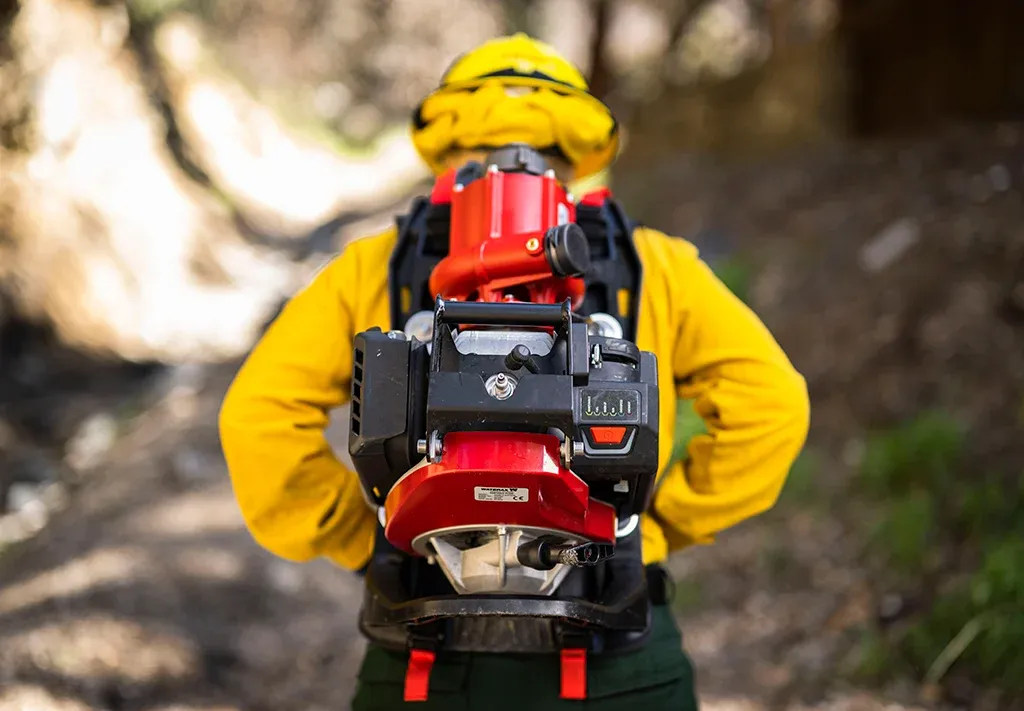
1 The WATERAX MARK-3 Watson Edition pump has an ergonomic carriage system to reduce the risk of back injuries. (Photos courtesy of WATERAX.)
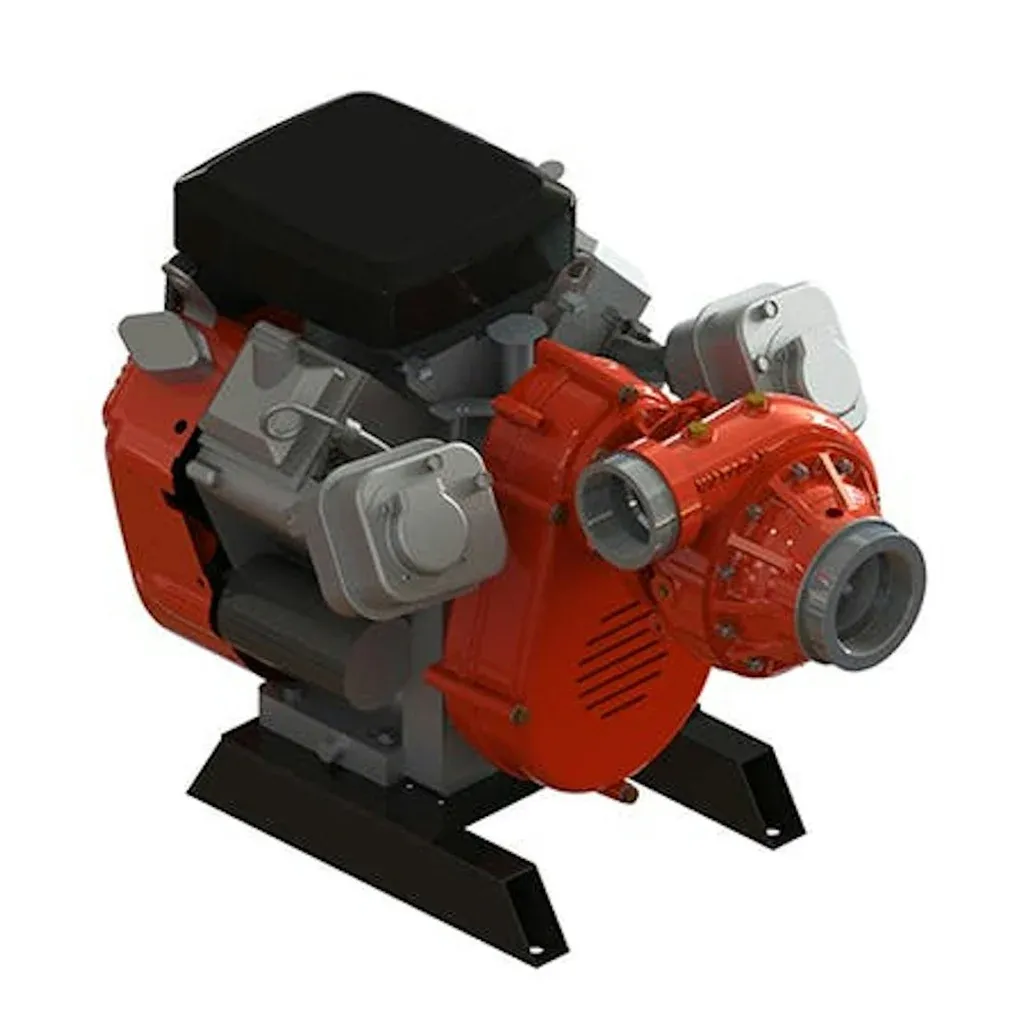
2 The WATERAX B2X-23V wildland pump is powered by a Briggs & Stratton 23-hp Vanguard engine.
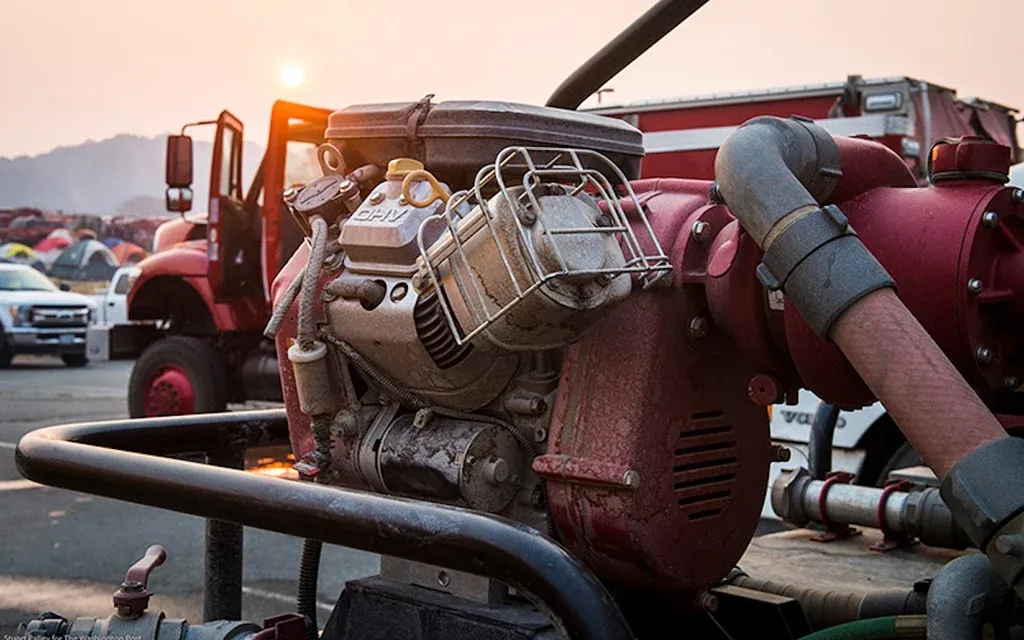
3 The WATERAX BB-4 high-pressure pump can typically be found on Type 6 wildland engines.
- Whether the pump is destined to be a built-in unit on a Type 3 or Type 6 wildland engine.
- If it should be a portable pump that can be offloaded to provide a water supply from draft or to supply extended hoselines off the rig.
- If it must be light enough to be backpacked by wildland firefighters into the fire line.
With NWCG general guidelines on minimum performance in mind, there are several important considerations when spec’ing a Type 3 or Type 6 rig for wildland firefighting. Jason Field, owner of Field Commercial Repair and a wildland firefighter since 1998, says fire departments must consider the apparatus that are specific to their needs depending on where they are located in the country, the type of fire load they might face, and the terrain they will have to maneuver through. “You have to consider the weight of the rig, especially if you are running it in sandy or loose soil areas; the vehicle has to be very mobile and maneuverable; four-wheel-drive is a must;the pump must be able to draft from a static water source; and the vehicle must have pump-and-roll capabilities,” he says.
Field notes that when his company specs and builds Type 6 wildland engines, it typically includes a built-in WATERAX STRIKER™ 2 Plus two-stage high-pressure pump that can deliver 97 gpm at 100 psi (this meets the performance criteria for a Type 6 engine) that is powered by a 13-horsepower (hp) Honda gasoline engine. He says the STRIKER high-pressure pumps can also be paired with Briggs & Stratton Vanguard four-stroke engines with either a two- or three-stage WATERAX pump end. Field adds that the STRIKER pumps share common parts with the WATERAX MARK-3® and BB-4® pumps and are known for the same durability and reliability.
Field says that the STRIKER pump’s applications include direct attack firefighting, long hoselays for remote watering during firefighting operations, high-elevation firefighting in mountainous areas, in-series pumping over long distances, parallel pumping for higher volumes, and slip-on units.
STRIKER pumps feature a quick-release clamp and detachable pump end for minimal equipment downtime and inventory, a unique blister-resistant mechanical rotary seal to prolong pump end longevity, a sealed bearing to eliminate pump end greasing in the field, a drive-belt system for reliable low-maintenance performance, aluminum alloy pump components and anodized parts for lighter weight and greater resistance to corrosion, and Fastwire™ included on all vehicle-mounted units.
Kiela Olson, sales and marketing representative for Heiman Fire Equipment, says that Heiman’s slide-in wildland fire skids come standard with WATERAX BB-4 high-pressure pumps. “A typical slide-in wildland unit for a Type 6 wildland engine has a BB-4 that has a minimum flow of 50 gpm at 100 psi and a maximum flow of 103 gpm at 150 psi,” Olson says. The BB-4’s maximum capabilities are 106 gpm at free flow with a shut-off pressure of 440 psi. Olson adds, “Also, almost all of the slide-in wildland units that we sell are upgraded with a foam system and a 10-gallon foam cell—either the Scotty 4072 foam system or the FRC FoamPro 1600 foam system.”
Olson points out that the BB-4 pairs the WATERAX four-stage high-pressure pump end with a Kubota D902 25-hp diesel engine that’s compatible with Type 4, Type 5, and Type 6 wildland engines. The four-stage pump end is also compatible with other engine platforms, including the 21-hp Honda and the 18- and 23-hp Briggs & Stratton gas engines. She adds that the BB-4 is also listed on the U.S. Forest Service (USFS) Type 6 Fire Apparatus specifications and is suited to operate in a variety of fire operations, such as direct attack, remote watering, sprinkler systems, and in slip-on units. The BB-4 also is available in both horizontal- and vertical-drive orientations.
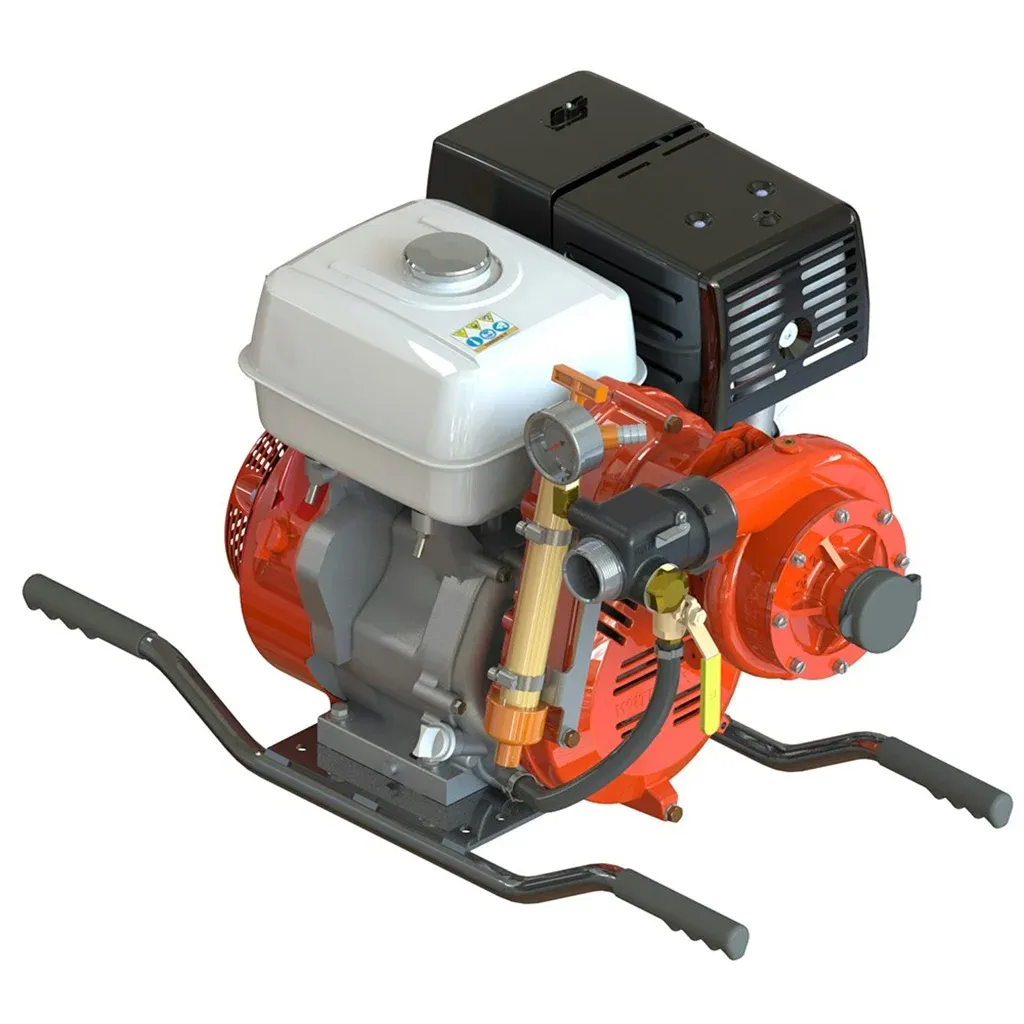
4 The STRIKER-II-13P configuration is powered by a Honda 13-hp engine and vertical-drive unit in a portable configuration with a carry frame, hand primer, and check valve.
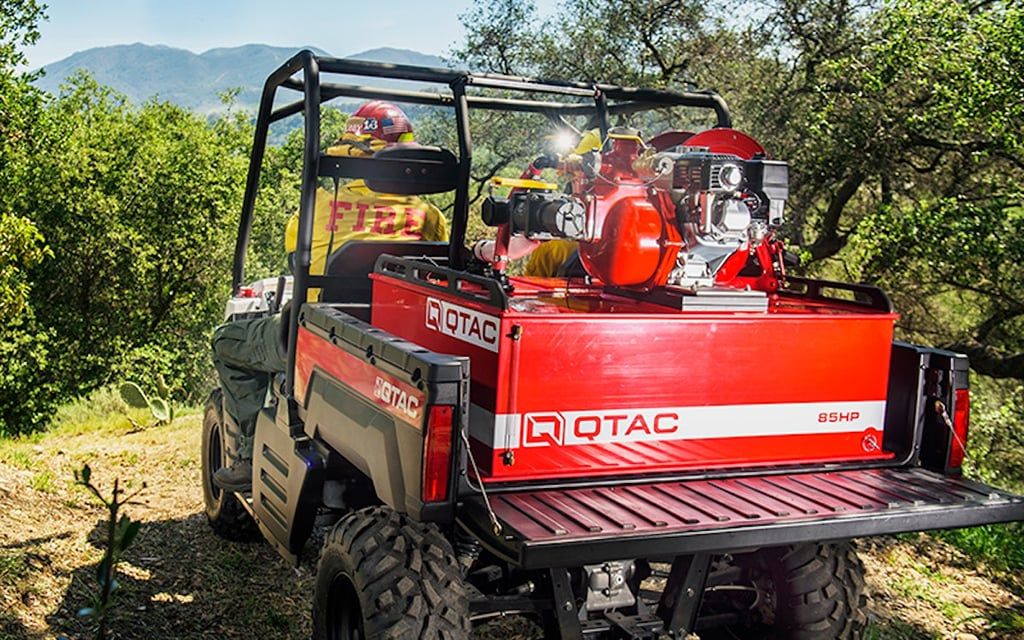
5 The VERSAX is a rugged and economical twin-impeller self-priming pump powered by either a Honda or a Briggs & Stratton Vanguard engine, shown here on a QTAC wildland firefighting UTV.

6 The MINI-STRIKER is a portable and lightweight pump that combines a single-stage pump end powered by a Honda four-stroke 2½-hp engine.
“We also build Type 3 wildland engines,” Olson says, “usually with a Darley JMP500 power takeoff (PTO) main pump and a WATERAX BB-4 auxiliary pump for pump-and-roll capabilities.”
Jordan Botsford, WATERAX’s USA East account manager, points out that the BB-4 is often used in attack line firefighting and long hose lays for remote watering as well as for high-elevation firefighting, in-series pumping, and parallel pumping operations to provide higher volumes of water. He says that the high pressure of the BB-4 pump also provides greater accuracy in water flow trajectory.
The BB-4’s four-stage pump end is compatible with the WATERAX MARK-3 pump to allow for in-field exchanges, and its aluminum alloy pump components and anodized parts mean the pump is lighter in weight and has greater resistance to corrosion, Botsford adds.
For those fire departments or fire agencies that want a higher volume pump, Heiman uses a WATERAX B2X™ midrange pump on its slide-in wildland units. Olson says the B2X-D902 diesel unit is ideal for brush trucks used in wildland and urban interface operations. “The WATERAX quick-release clamp on the B2X pump provides easy maintenance without the need to disassemble the complete pump unit, which significantly reduces equipment downtime,” she points out. The B2X is also compatible with the 21-hp Honda and 18- and 23-hp Briggs & Stratton gas engines.
The B2X pump unit is available in horizontal- and vertical-drive orientations, and its applications include being permanently mounted in vehicles and in slip-on units for use in attack lines, structure protection, and water transfer.
Karl Weinreich, of QTAC Fire and Rescue Apparatus, maintains that spec’ing the right pump for wildland firefighters “is all about balancing the pump’s gpm, psi, its weight, and its use. For wildland response, performance at elevation, the length of the hoselay it can support, and quick deploy times are key.”
Weinreich says, “QTAC avoids overbuilt setups that add unnecessary weight and complexity, especially for utility terrain vehicles (UTVs) and wildland fire skid units.”
He points out that QTAC commonly uses WATERAX VERSAX® 6 and VERSAX 9 wildland pumps on its UTV fire skids and smaller apparatus. “The pumps’ compact footprint, reliable recoil start, and solid pressure performance make them ideal for lightweight platforms,” Weinreich says. “These pumps support drafting operations and perform well in remote, rugged terrain, which is critical for wildland use.”
The twin-impeller design of the VERSAX pump is self-priming and provides additional pressure for longer and higher pumping applications, he notes, and is powered by either a Honda or a Briggs & Stratton Vanguard gasoline engine. The pump casing and diffusers are made from corrosion-resistant grade aluminum, and the nylon glass fiber-reinforced impellers also are lightweight and corrosion resistant.
The VERSAX pump has three outlet ports—two 1-inch ports and one 1½-inch port—and one 2-inch intake port that provide greater flexibility for plumbing configurations; a powder-coated casing for added corrosion resistance; easy access to the drain port; low oil protection; and Fastwire on all vehicle-mounted units, Weinreich says.
Field points out that the WATERAX MARK-3 wildland pump is well-known for its durability and the amount of water that it can move for its size. “WATERAX listened to feedback from firefighters about some things about the MARK-3 such as its overall weight, hard starting, and priming issues,” Field says. “The result was an entirely new platform called the MARK-3 Watson Edition that plugs right into existing MARK-3 water moving systems.”
He says the MARK-3 Watson Edition is 30% lighter and 20% smaller than the MARK-3 and has an integrated carriage system that makes for easy loading and unloading, the option to backpack it side up or side down, and an integrated carry handle.
Field says that the MARK-3 Watson Edition pump has features that improve firefighter safety, like the ergonomic carriage system to reduce the risk of back injuries; padded straps that protect the shoulders and back from bruising; a muffler heat shield that protects against severe burns; and a lighter pump that reduces incidences and severity of slips, trips, falls, and transport-related injuries.
The MARK-3 Watson Edition has an LED visual interface showing engine operating status, a troubleshooting function, high-temperature protection, a pull start that requires less force, a foothold for improved steadiness, an engine warm-up indicator, and an anti-flooding feature, he says.
Field also cites the WATERAX MINI-STRIKER® as a portable, lightweight wildland pump that’s well suited for initial attack operations as well as being a popular choice for entry-level skid applications. The MINI-STRIKER® has a single-stage pump end powered by a Honda four-stroke 2½-hp gasoline engine, is made from lightweight aluminum components, and has a robust carrying handle and an integrated fuel tank.
Resources
https://www.waterax.com/en/product-category/bb-4-high-pressure-fire-pump.
https://www.waterax.com/en/product-category/bb-4-high-pressure-fire-pump-diesel.
https://www.waterax.com/en/product-category/b2x-mid-range-pump.
https://www.waterax.com/en/product-category/b2x-mid-range-pump-diesel.
https://www.waterax.com/en/product-category/striker-high-pressure-fire-pump.
https://www.waterax.com/en/product-category/mini-striker-light-weight-high-pressure-fire-pump.
https://www.waterax.com/en/product-category/mark-3-watson-edition-portable-high-pressure-fire-pump.
https://www.waterax.com/en/product-category/versax-multipurpose-pump.
